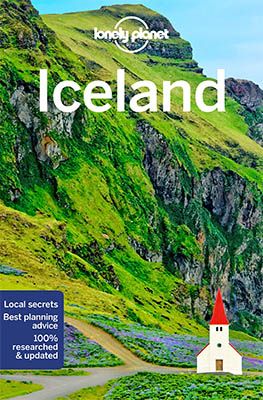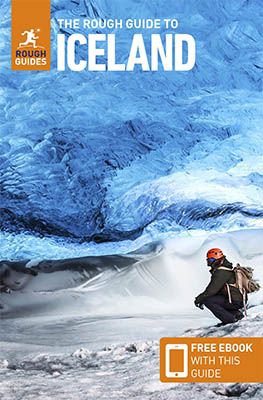Iceland is an amazingly beautiful travel destination if you like very special, endless and especially rugged landscapes. That unspoilt nature is always in sight and within reach. Many volcanoes give the island a special look. But along the way you will also encounter towering geysers, bubbling mud pools and the most wonderful hot springs. You will also find the most beautiful waterfalls and untouched glaciers on the green island. With the cherry on the cake: the northern lights! This road trip on the ring road takes you to the most beautiful nature in Iceland.
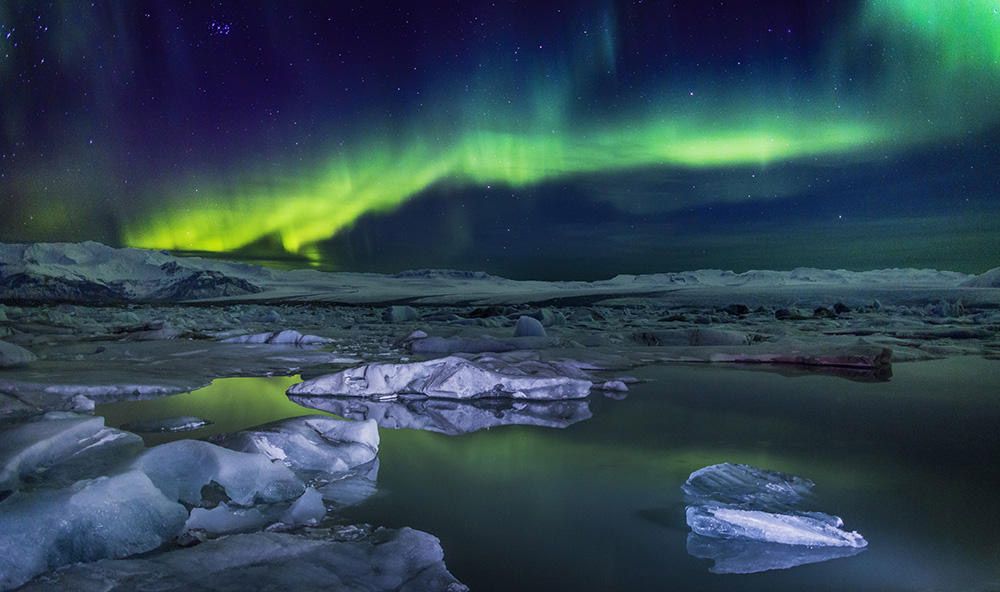
The most beautiful nature sites in Iceland along the Ring Road
.A road trip through beautiful Iceland will take you to the most beautiful natural phenomena. From Reykjavik you drive counter-clockwise around the whole island via the Ring Road (route 1). Start and finish of our special route is the capital.
The surroundings of Reykjavik
From Reykjavik, you can already see the ocean or the mountains. When we leave the city, we are immediately in the middle of nature. Our only connection to civilisation is a ribbon of asphalt. Thingvellir National Park (UNESCO World Heritage) is an hour’s drive away. You will find beautiful nature with hot geysers (Geysir, Strokkur), cool crystal-clear lakes and wonderful waterfalls such as Skógafoss and Seljalandsfoss. Every day at 10 a.m., there are free guided walks of one hour. In addition, the exhibition in the visitor centre is highly recommended. On the website of Thingvellir National Park, you will find all the details.
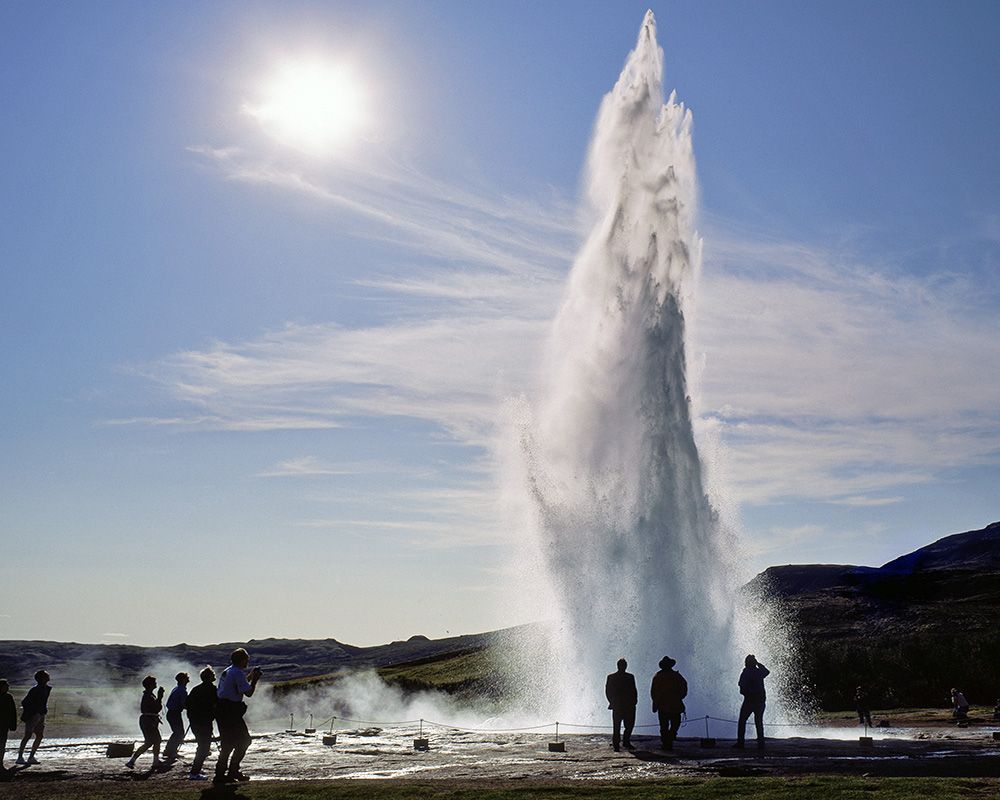
Southern Iceland
Southern Iceland has a variety of natural phenomena. Here you will find Europe’s largest glacier Vatnajökull. It is the source of countless waterfalls and lakes. Pieces of broken-off ice float like mini-icebergs towards the sea. We see this at the Jökulsárlon and Fjallsárlon. The first is more crowded. You can get close to the icebergs by Zodiac or amphibian boat. The cost is about €50-75. Fjallsárlon is a bit smaller, a bit off the road, but much quieter and no less beautiful.
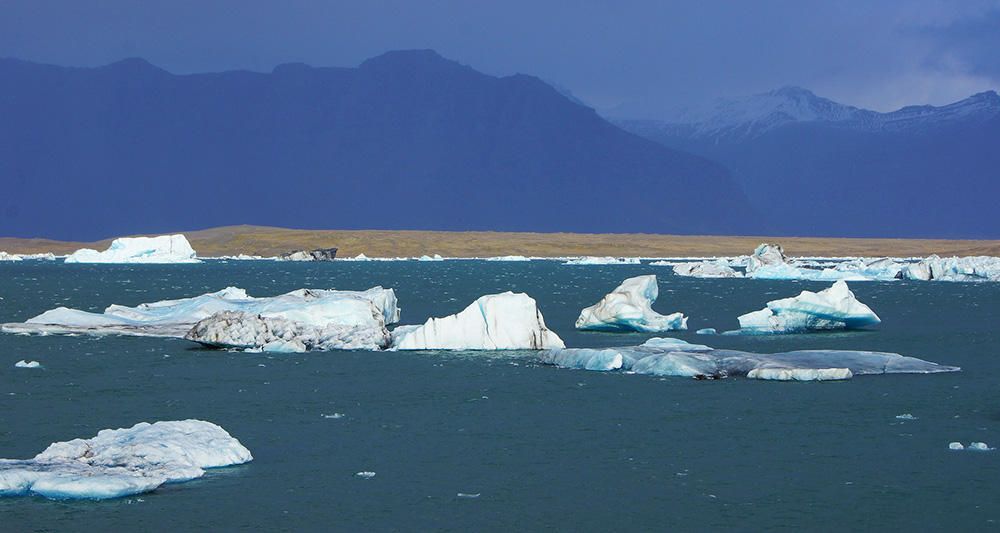
A little further on is Reynisfjara. This is the beach with jet-black sand. It was once created by solidified lava. The lava cooled down quickly because it flowed into the sea. The lava became hard and pulverised by the weather.
We also visited Fjaðrárgljúfur. An impressive, whimsical canyon, carved out by glacier water. From the look-out points, we gazed into the depths at the little river below. In a good hour you walk along the secured edge and back.
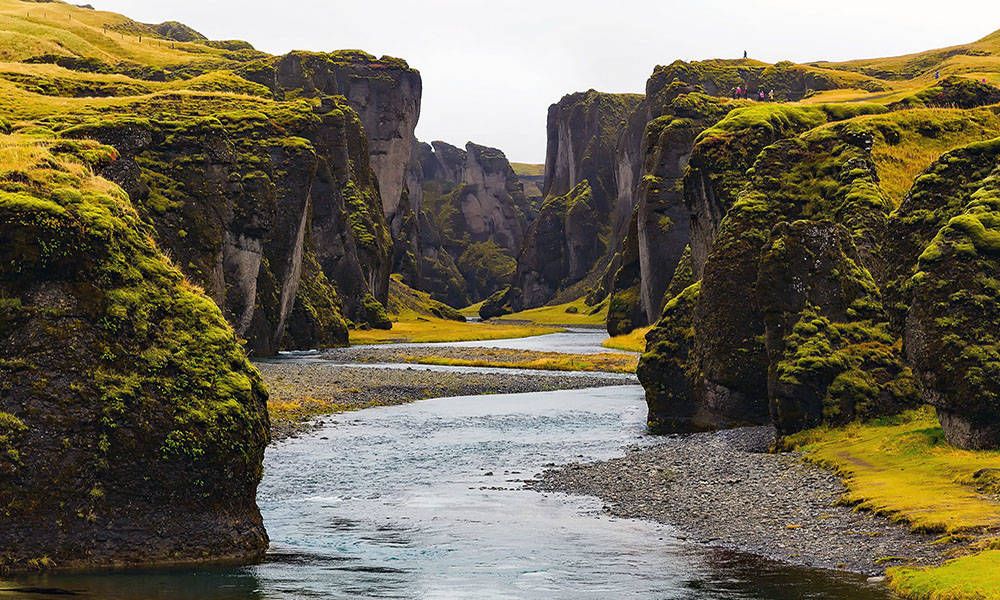
East Iceland
East Iceland has its own character. Small villages, dramatic coastline, narrow fjords. It is clearly quieter here (11,000 inhabitants). Another advantage: this region is less touristy. Around 3,000 reindeer live here in the wild. They are feral descendants of imported Scandinavian ancestors. They were once used as working and pack animals. But mechanisation brought them out of fashion.
Borgarfjordur Eystri is pretty much the ‘capital’ of puffins. Here we climb the bird cliff with a viewing platform. Birdwatchers will enjoy seeing many other bird species here. The area is also popular among hikers and mountain bikers. There are various trails for day trips or multi-day tours.
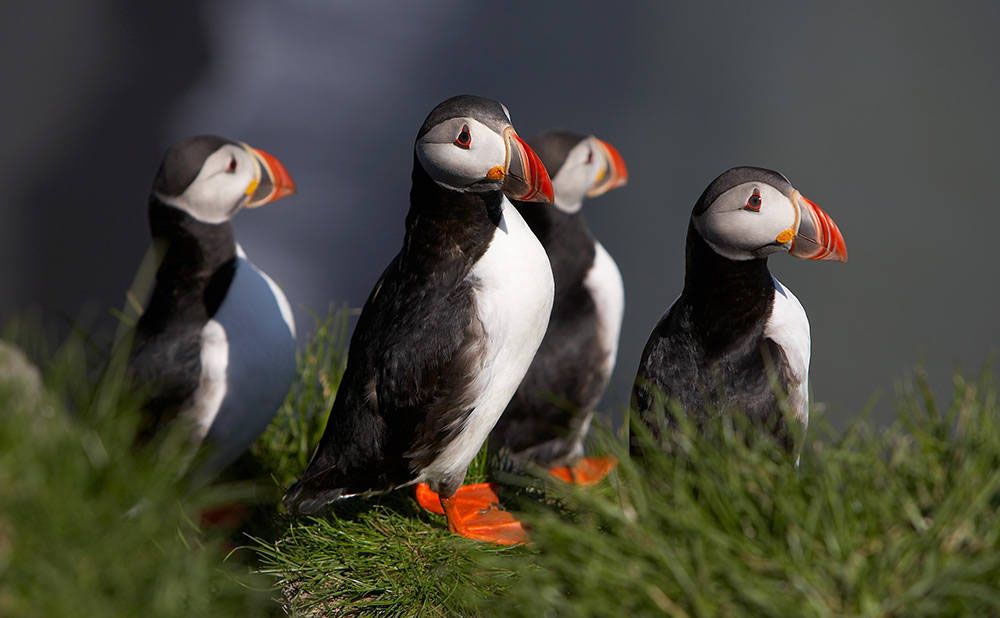
Iceland does not have many trees or forests. The largest forest in Iceland, Hallormsstaðaskógur, is located here. It consists mainly of birch trees. In the forest there are beautiful hiking trails. One leads to the beautiful Ljósárfoss waterfall – also called Selfoss in the river Ljósá.
The Stuðlagil Gorge is a unique spot in Jökuldalur. For a long time, this area was unknown. When a hydro-electric power station was commissioned, the water level in the river dropped. Thus, one of the largest and most beautiful columnar basalt formations in Iceland became visible.
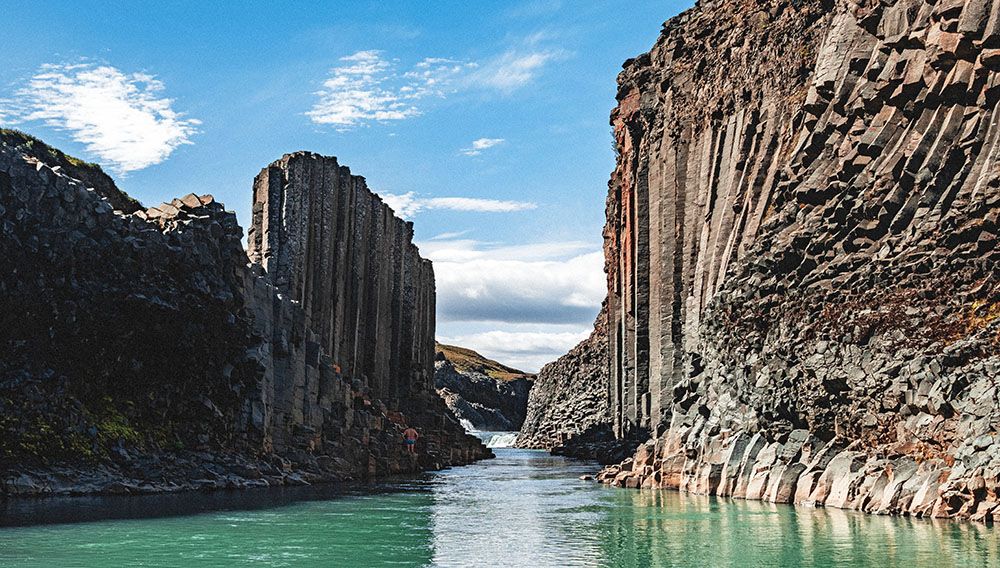
Northern Iceland
Northern Iceland has many highlights. Mývatn (Mosquito Lake) alone is absolutely worth a visit. Because here you will find an area with rugged rock formations, boiling mud, sulphur springs and pseudo-craters. These are cones that look like volcanic craters. They were formed when underground gas bubbles exploded.
Mývatn is a protected wetland area with many bird species. The Laxá River, famous for its salmon, rises from it. Further on, we visit the hot springs at the Námaskarð mountain pass. A geothermal area without vegetation. The many hot springs spread a sulphurous air. Escaping steam brings substances to the surface. This changes the mud into beautiful bright colours. Not only the smell but also the view takes your breath away.
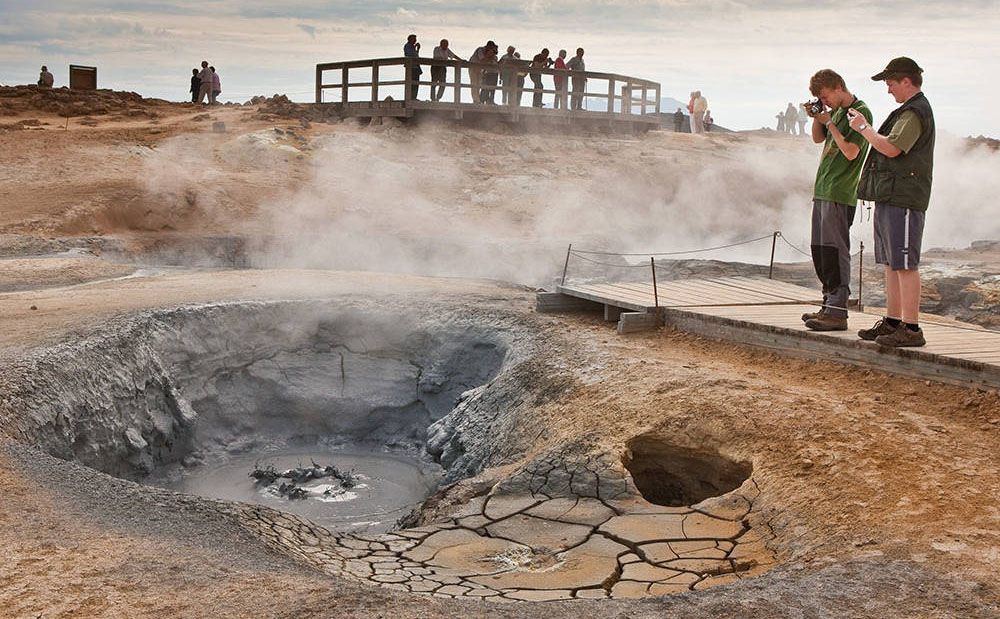
Refreshment can be found at Dettifoss: Europe’s most powerful waterfall. Nearby (within walking distance) are two more waterfalls. The Hafragilsfoss and the Selfoss are smaller. But they are certainly just as beautiful.
The best chance to see whales is from harbours in North and West Iceland. Here you can have unforgettable encounters with the giants of the sea. Various whale watching tours depart from Dalvík, Akureyri and Húsavik. The cost for such a special excursion is about €65 per person.
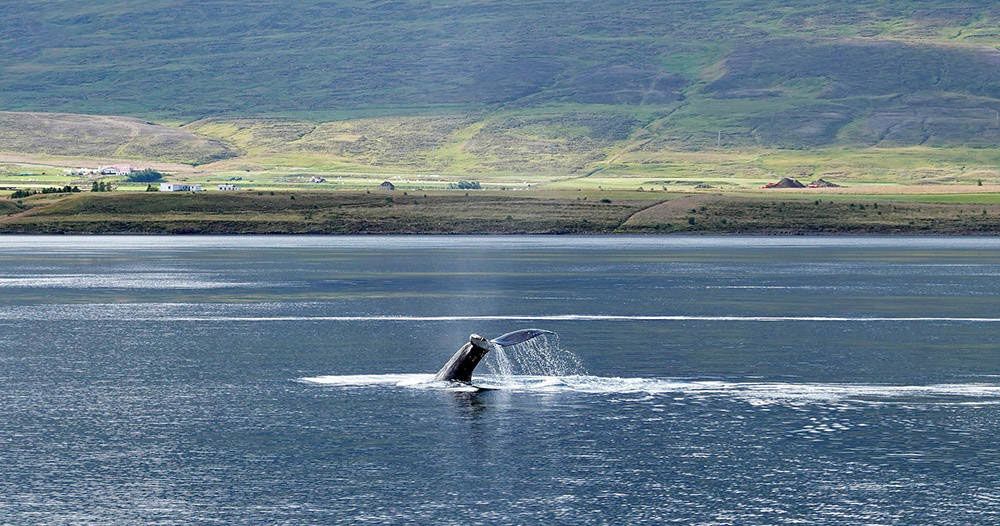
West Iceland
West Iceland is a special region, full of springs, waterfalls, mountains and caves. These are the places you should not miss if you want to see the most beautiful nature of Iceland.
Warm springs
Hot springs can be found all over Iceland. But West Iceland has some special ones.
Deildartunguhver is the highest and most powerful hot spring in Europe. It delivers 180 l/sec of 100°C hot water. It is partly used for central heating in the cities of Borgarnes and Akranes. In addition, the source supplies shower water to a radius of 65 km around the site.
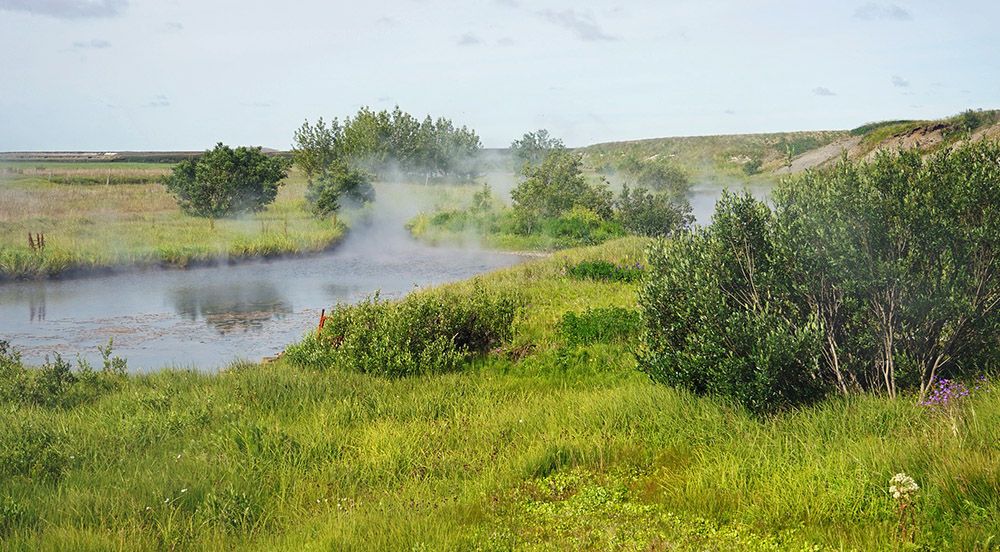
About 30 km away, in Reykholt, we find the most famous hot spring in West Iceland. The famous Icelandic writer and politician Snorri Sturluson lived here on his farm. He was even the first to have a lovely private hot spring bath. He was murdered in it in 1261. Now there is an intellectual centre with exhibitions, a conference centre and a library with Snorri’s works. Admission € 11, seniors and wheelchair users € 7, daily 10-17h.
Krosslaug, near Reykir in Lundareikjadalur, is about 50 metres above the road. The bath is not large. But a myth says that the water of 42°C is healing. The surroundings are beautiful, and the bath is reasonably clean for a natural hot spring.
You will find such pools in many places. They are rarely marked on the map. Ask around in a village where you are staying. Chances are that they can point you to a unique spot. They are free and vary in size. After all, they arose naturally. At most, stones have been placed around them to make access easier.
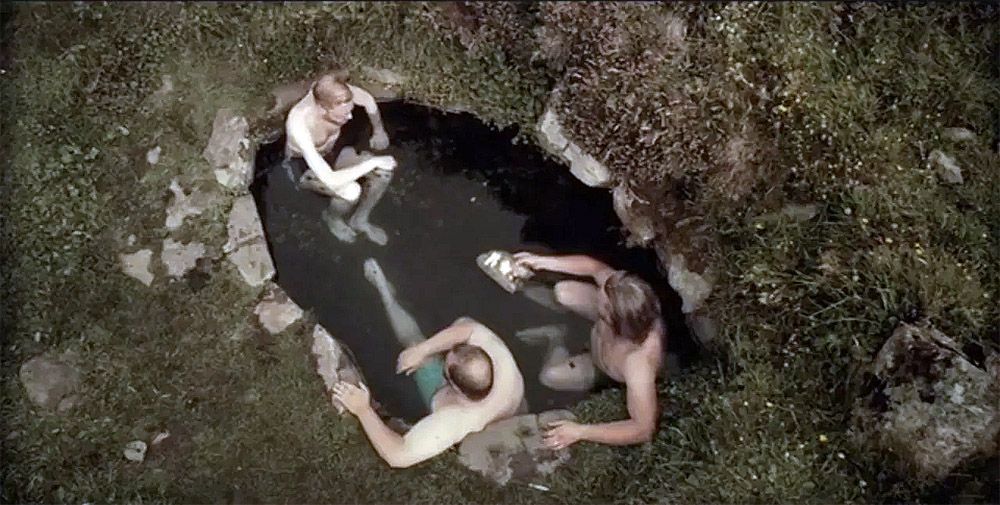
Westfjords
In the Westfjords, the highlights follow one another. We recommend these three:
Látrabjarg is the most western point of Europe. Here, you stand face to face with one of Europe’s largest bird colonies! On a clear day, we can even see Greenland from here.
On the way, we passed the Dynjandi waterfall. The water thunders down in 7 steps of 30 to 60 metres width. Not for nothing does Dynjandi mean thundering. It is an amazing sight to witness this natural spectacle
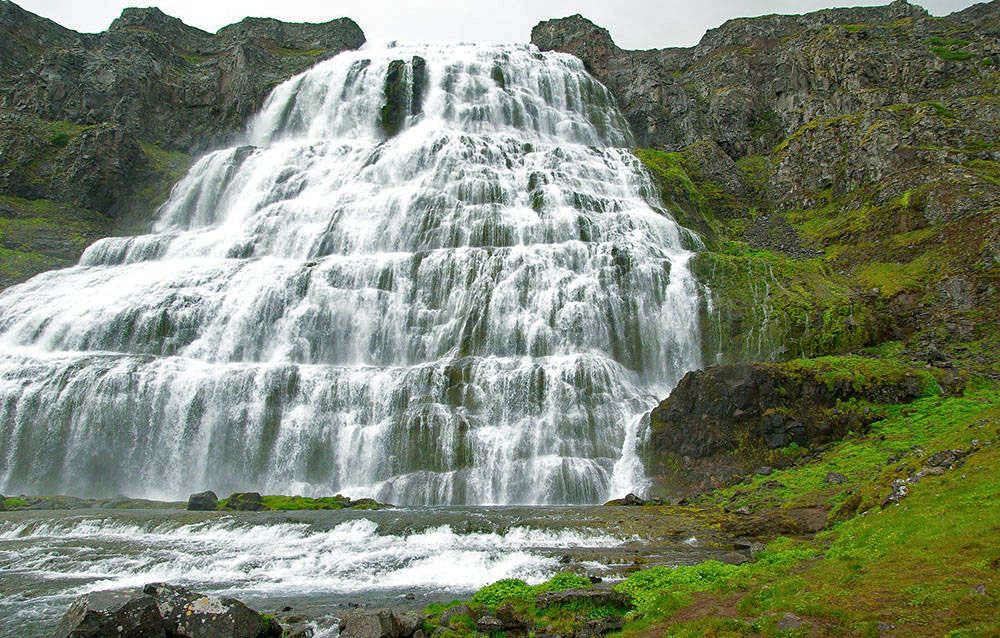
Hornstrandir is a hiker’s paradise. It is rough and ready. There is hardly any infrastructure. You will find the arctic fox and spectacular cliffs full of birds. Accessible by boat from Ísafjörður, Bolungarvík and Norðurfjörður.
The Westfjords are sparsely populated (about 7100 inhabitants) and apart from the roads and villages unspoiled. Nature rules here. Accommodation, petrol stations and eateries are sparser here. That is why a good planning is very important.
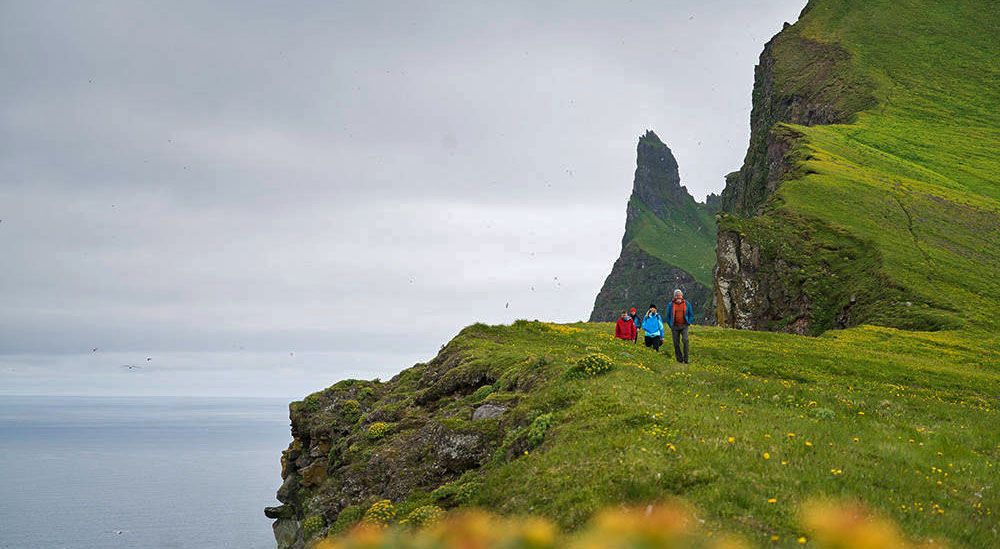
Caves and volcanoes
West Iceland has a range of beautiful waterfalls, mountains and special caves. These mountains are of course suitable for hiking. But you can also ski here.
Víðgelmir (15 km from Húsafell) is the largest of all the caves in Iceland. It is even one of the largest lava caves in the world. According to specialists, it is the most extraordinary cave on earth. The cave has beautiful ice formations. Moreover, deep inside there are lava stalactites and stalagmites. Bones and jewellery from the Viking age have been found. Entry is only possible with a guide. Guided tours last 1.5 or 4 hours. Prices start from €50.
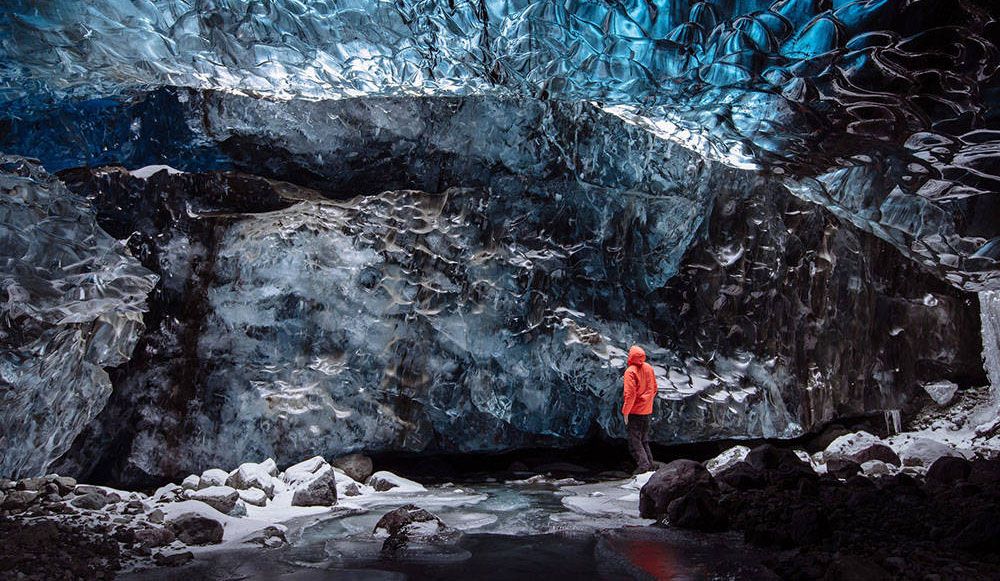
On the Reykjanes peninsula, there are several craters, caves, lava fields, many bird species and a lot of thermal activity. One of the highlights is the descent into a dormant volcano. It is called Þríhnúkagígur and is half an hour’s drive from Reykjavik. Then we hiked for about 45 minutes over a spectacular lava field to the lift. 120 metres down, the guide takes us for an hour through the magma chamber. This is the only one in the world that you can visit. You also visit various adjoining rooms. Multicoloured rocks and amazing shapes can be seen. Þríhnúkagígur has been asleep for 4,000 years. Yet the excitement of an eruption remains. Also want to walk in a volcano? For €300 pp you make an unforgettable trip. Indeed, it is a hefty sum, but the experience is unequalled and priceless.
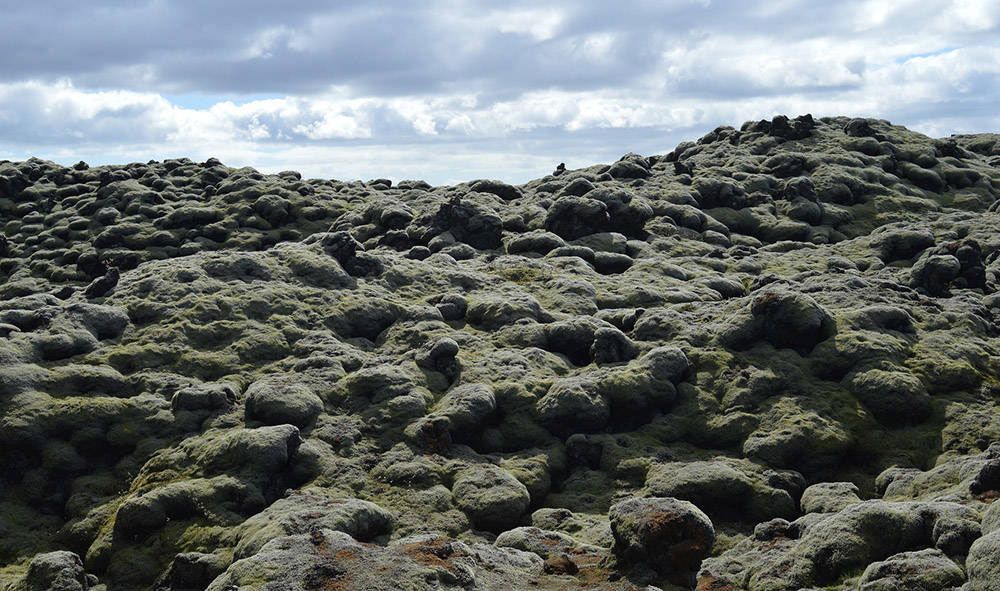
Mud Pools
Within the Reykjanes (UNESCO) World Geopark, we find Seltún. It has many mud pools and fumaroles (openings in the earth’s crust). The minerals create colourful rocks. Good hiking trails run through the area. You can visit it for free, 40 minutes from Reykjavik.
Close to the Reykjanes lighthouse, we find an area called Gunnuhver. Named after a female spirit that was captured there. She always caused a lot of commotion here until a priest set a trap for her. Because of this she fell into the well. This happened about 400 years ago.
The mud pools are created where steam from boiling geothermal reservoir water flows out. This causes the steam to condense. It also mixes with surface water. Carbon dioxide and hydrogen sulphide acidify the water at the same time. This turns the fresh lava rock into clay.
An elevation close to Gunnuhver allows you to look at the source. But you can’t stop there. You can hear the powerful sound of the spring. You also notice the boiling water and feel the steam on your face. You notice the enormous power under your feet coming from the ground. A second elevation is at Kísilhól, a pebble hill. From there, you have a good view of the Gunnuhver springs and surroundings. An extraordinary experience. What’s more, all of this is free of charge. Gunnuhver is located almost at the tip of the Reykjanes peninsula. It is about an hour’s drive from the capital.
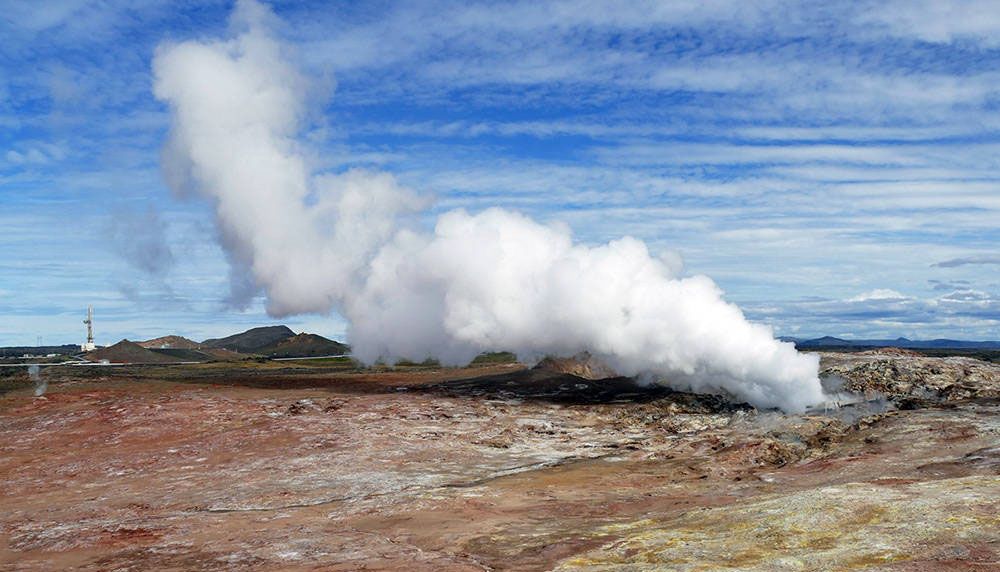
Iceland’s most beautiful nature along the Ring Road: practicalities
Duration of the road trip
The Ring Road around Iceland is about 1,350 kilometres long. The road is mostly paved. In some places the road has a solid gravel surface. You can drive the Ring Road with a normal passenger car. Bad conditions are mainly due to weather conditions. There is, especially outside Reykjavik, little traffic on the road.
To fully enjoy the most beautiful nature of Iceland, we recommend you to take at least 16 to 19 days for this trip. This way you can let yourself be impressed by the overwhelming landscapes of this wild country.
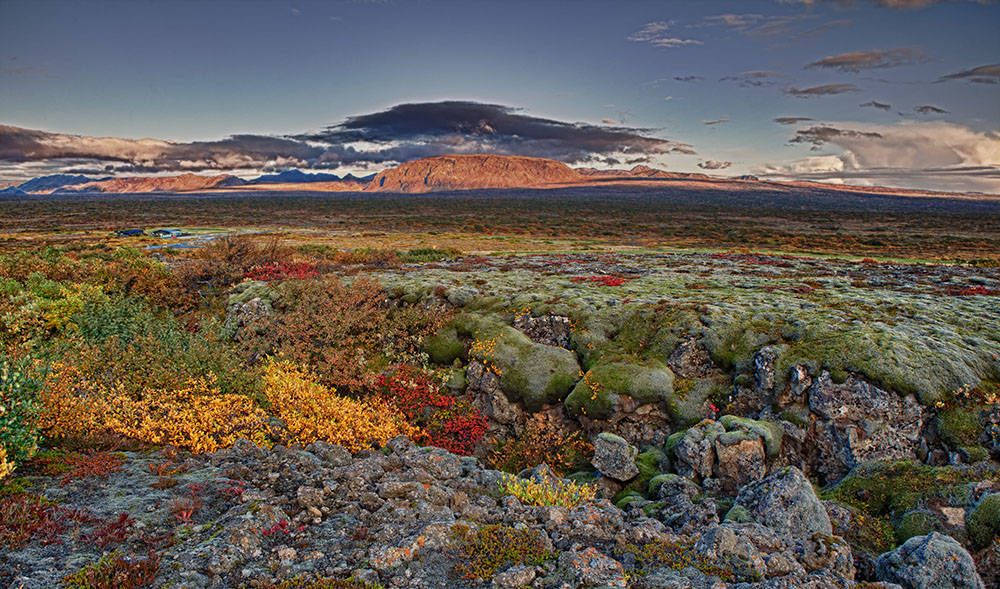
Enjoy the nature of Iceland safely
The nature of Iceland is a more than fantastic travel destination for nature and walking enthusiasts. However, Iceland is one of the most uninhabitable places on earth. Exploring nature in Iceland is not always without danger. Just think of the geysers.
Therefore, never ignore the warning signs. But even if there are no warning signs, the advice is always to use your common sense. Stay on the beaten track, for example. Only when you are with a professional guide should you deviate from the beaten track. Also, don’t get too close to a glacier, high waves on the coast or a big waterfall. And do not hike across glaciers without proper training and equipment.
It is also wise to check the latest road information before getting into the car. On this website you can find the most recent information about the state of the route.
Also, when hiking, be aware of sudden changes in the weather. Ask the locals what the forecast is. They know the area and the weather conditions like the back of their hand. Or join an organised trip. Icelanders are taught to respect the power of nature. They are taught from childhood to take care of themselves in the wilderness. Therefore, you will usually not find fences or warning signs. Not even in the most dangerous places.
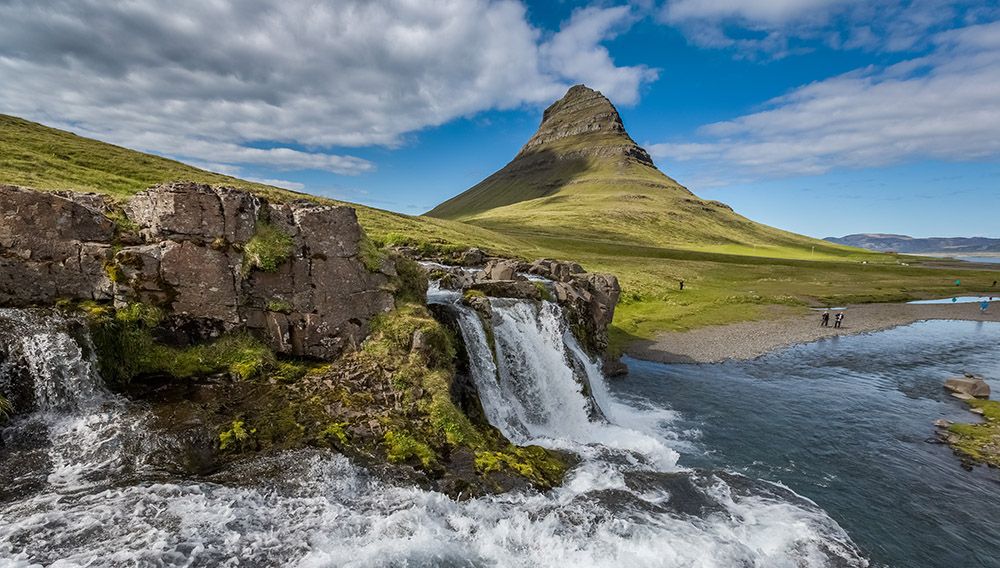
Accommodation along the Ring Road
For some places along the Ring Road, we have already selected the accommodation for you:

